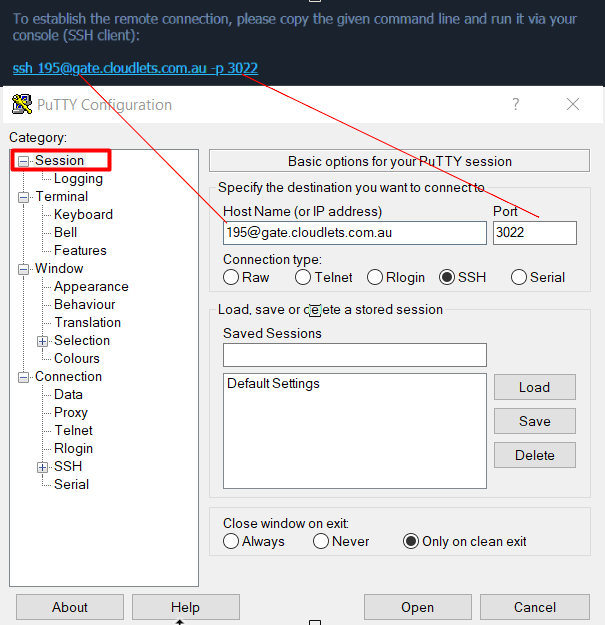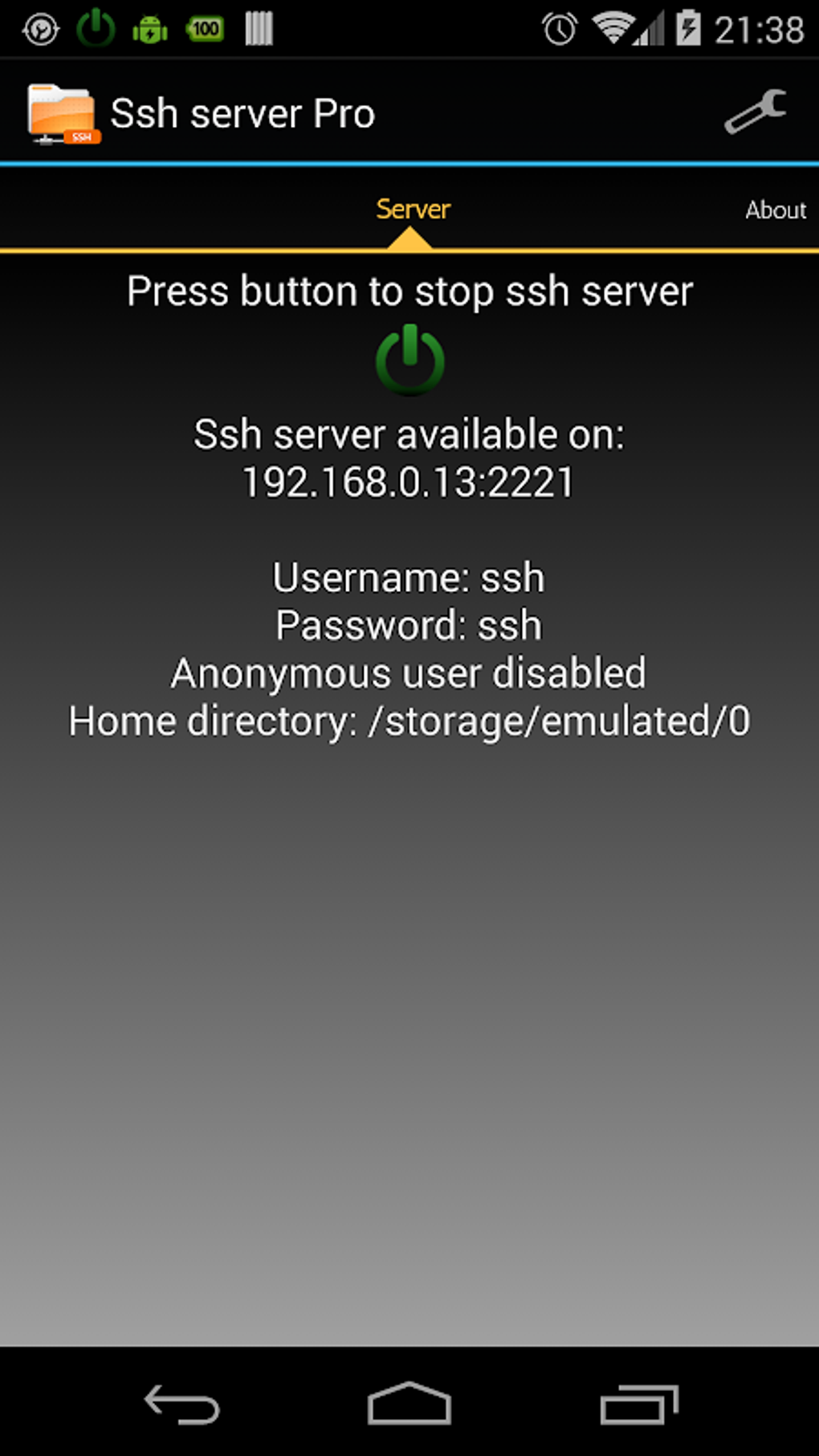Securely Connect Remote IoT: Your Guide To P2P SSH Free Download Options
Are you feeling a bit stuck trying to get your remote devices to talk to you safely? It's a very common worry, especially when you're dealing with things like IoT gadgets out in the world. You know, sometimes it just feels like your important information is at risk because a system is not quite up-to-date, or maybe you are seeing those unsettling messages about untrusted connections.
It's like your device is telling you, "Hey, I might be missing some important security updates," and you really want to get it back on track so everything runs more securely. We have all been there, trying to connect to a website, and a message pops up saying, "This connection is untrusted," or "The security certificate presented by this website is not secure." It can be pretty frustrating, can't it? You might have tried different browsers, like Firefox or Edge, only to run into the same issue.
This is where understanding how to securely connect remote IoT devices using P2P SSH comes in handy, and yes, looking for a free download solution can make a big difference. It's about finding a way to make sure your connections are truly secure, helping you avoid those nagging certificate problems and getting your devices to communicate directly, without all the usual fuss. We will talk about how this approach can help you regain control and peace of mind over your remote setups, very soon.
Table of Contents
- What Is P2P SSH for IoT?
- Why Secure P2P SSH Matters for Your IoT Devices
- The Magic of Peer-to-Peer Connections
- Finding Your Free Download Options
- Setting Up Your Secure IoT Link
- Keeping Your IoT Connections Safe and Sound
- Frequently Asked Questions About IoT Security
- Connecting with Confidence
What Is P2P SSH for IoT?
So, what exactly is P2P SSH when we talk about IoT? Well, P2P stands for peer-to-peer, and it just means connecting two devices directly. Think of it like a private phone line between your computer and your remote IoT gadget, without needing a central operator. SSH, or Secure Shell, is a network protocol that lets you access a computer or device over an unsecured network in a very secure way. It's basically a highly encrypted tunnel for your commands and data, which is pretty neat.
When you combine P2P with SSH for IoT, you are creating a direct, encrypted link between your personal computer and your internet-connected device, no matter where it is. This is especially useful for devices that might not have a public IP address, or when you want to avoid relying on third-party cloud services for access. It gives you a lot more control, and that is very important, you know, for security and privacy.
This method helps you bypass some of the usual network headaches, like setting up complex port forwarding on your router. It's a way to truly reach out and touch your remote IoT device as if it were right next to you, even if it's miles away. And it does all of this while making sure your connection is super private and protected from prying eyes, which is something we all want, actually.
Why Secure P2P SSH Matters for Your IoT Devices
Why should you really care about using secure P2P SSH for your IoT devices? Well, it's pretty simple: security. You know, just like when your Windows system tells you it's "out of date and missing important security and quality updates," your IoT devices can be at risk too. An insecure connection is like leaving your front door wide open; anyone could potentially walk in and mess with your data or even your device's functions. That's a scary thought, right?
Many people run into issues with untrusted connections or problems with security certificates, like when Firefox says it "can't confirm that your connection is secure." This often happens because the usual ways of connecting are not strong enough or have not been set up correctly. P2P SSH helps solve this by creating a very strong, encrypted tunnel from end to end. It means that the data traveling between your computer and your IoT device is scrambled in such a way that only your devices can understand it.
This level of security helps protect your sensitive data from being intercepted or tampered with. It also makes it much harder for unauthorized people to gain access to your devices. When you are using SSH, you are typically authenticating with strong cryptographic keys, which are much safer than simple passwords. This is a big step up for anyone worried about their device's safety, and it's a way to get you back on track so your windows can run more securely, and your IoT devices too.
The Magic of Peer-to-Peer Connections
So, what's so special about peer-to-peer connections, anyway? Basically, it's about directness. Instead of your IoT device needing to "phone home" to a central server, and then your computer also connecting to that same server, P2P lets them talk to each other directly. It's like cutting out the middleman, which can make things faster and, in some respects, more private.
This direct approach is especially useful for IoT devices that might be behind a home router or a corporate firewall. Often, these devices do not have a public IP address, which means you cannot just "dial" into them from the internet directly. P2P solutions, particularly those that use SSH, can help punch through these network barriers by establishing an outbound connection from the IoT device to a rendezvous server, and then from your computer to that same server, allowing the two to find each other and set up a direct link.
This means you can manage your smart home gadgets, industrial sensors, or remote cameras without needing to configure complex network settings on your router or pay for a static IP address. It simplifies the whole process of remote access while keeping things very secure, which is pretty much what everyone wants for their remote setups. It also reduces reliance on third-party cloud services, giving you more control over your data and connections, and that is a rather big plus.
Finding Your Free Download Options
Now, let's talk about finding those "free download" options for securely connecting your remote IoT devices with P2P SSH. There are several open-source tools and platforms out there that can help you achieve this without costing you a penny. It's pretty amazing what the open-source community provides, honestly.
One of the most common ways to get started is by using standard SSH clients, which are often built into operating systems like Linux and macOS. For Windows users, a popular choice has been PuTTY, which is a free and open-source SSH and Telnet client. You can find a free download for PuTTY by searching for it online, and it's been a go-to for many years. This lets your computer initiate the secure connection.
For the peer-to-peer aspect, you might look into tools that help establish reverse SSH tunnels or more advanced P2P networking frameworks. Some projects offer a free tier or completely free software that helps devices behind firewalls connect. When you search for "free p2p ssh software for IoT" or "ssh tunnel for IoT devices," you will find various community-driven projects. Always check the reputation and community support for any software you consider downloading, just to be safe, you know.
Remember, the "free download" usually refers to the software itself, not necessarily the network infrastructure or the IoT device itself. However, for most home or small-scale industrial applications, these free tools are more than enough to get a very secure and reliable connection going. It's about empowering you to manage your own devices directly, which is a pretty cool thing to do.
Setting Up Your Secure IoT Link
Setting up your secure IoT link using P2P SSH might seem a little daunting at first, but it's actually quite manageable. The basic idea is to get your remote IoT device to initiate a connection to a publicly accessible server, and then your local computer also connects to that same server. This creates a sort of "meeting point" for your devices, allowing them to establish a direct, secure channel.
First, you will typically need an SSH client on your local computer. As mentioned, PuTTY is a good free option for Windows, while Linux and macOS usually have SSH built-in. Then, on your IoT device, you will need an SSH server installed and configured. Many IoT operating systems, like Raspberry Pi OS, come with an SSH server that you can enable with just a few commands, which is very convenient.
The trickier part for P2P is often dealing with network address translation (NAT) and firewalls. This is where reverse SSH tunnels or specialized P2P services come into play. A reverse SSH tunnel, for instance, lets your IoT device "call out" to a server you control (or a rented VPS with a public IP), and then you can "call in" to that same server, which forwards your connection to your IoT device through the established tunnel. It's a clever way to bypass those network restrictions, you know.
When you are setting this up, it's really important to use SSH keys for authentication instead of passwords. SSH keys are much more secure and harder to crack. You generate a pair of keys: a private key that stays on your computer and a public key that you put on your IoT device. This way, only your computer with the correct private key can connect to your device. It's a bit like having a very unique digital fingerprint for access, which is much better than just a simple password, basically.
For more detailed steps on setting up SSH keys, you might want to learn more about SSH key management on our site, as it is a pretty fundamental step for strong security. This helps ensure that your connections are not just direct, but also incredibly secure, preventing issues like "security certificate problems" that you might have experienced before.
Keeping Your IoT Connections Safe and Sound
Keeping your IoT connections safe and sound goes beyond just setting up P2P SSH. It's an ongoing process, kind of like keeping your Windows operating system up to date. Remember how your device warns you when it's "out of date and missing important security and quality updates"? The same applies to your IoT gadgets and the software you use to connect to them.
One of the biggest things you can do is to regularly update the software on your IoT devices. This includes the operating system, any installed applications, and the SSH server itself. Updates often contain patches for security vulnerabilities that could otherwise be exploited. It's a simple step, but it makes a huge difference in keeping your devices protected, honestly.
Another key practice is to use strong, unique SSH keys for every connection. Avoid using the same key for multiple devices, and always protect your private keys with a strong passphrase. If you are using a reverse SSH tunnel, make sure the server you are using as a rendezvous point is also very secure and well-maintained. This server is a critical link in your secure chain, so it needs to be trustworthy, you know.
You should also limit access to your IoT devices to only what is absolutely necessary. For instance, if your device only needs to send sensor data, don't give it full administrative access to everything. Use dedicated user accounts with minimal privileges. This principle, often called "least privilege," helps minimize the damage if an unauthorized person somehow gains access, which is a very smart approach to security.
Finally, regularly review your connection logs on both your local machine and your IoT device. This can help you spot any unusual activity or failed login attempts that might indicate someone is trying to breach your security. Staying vigilant is a big part of keeping your remote IoT connections safe, and it's something you should really make a habit of doing. For more tips on overall device security, you can link to this page IoT Device Security Best Practices, which has more helpful information.
Frequently Asked Questions About IoT Security
How do I securely access my IoT devices remotely?
You can securely access your IoT devices remotely by using methods like SSH, especially when combined with a peer-to-peer (P2P) approach. This creates an encrypted, direct connection, often bypassing complex network setups like port forwarding. Using SSH keys for authentication, rather than just passwords, makes the connection much stronger and safer. It's about creating a private, secure tunnel to your device, no matter where it is, which is pretty cool.
Is SSH a good way to connect to remote IoT?
Yes, SSH is actually a very good way to connect to remote IoT devices. It provides a strong, encrypted channel for communication, protecting your data from being seen or changed by others. It's widely supported and very flexible, allowing you to execute commands, transfer files, and even create secure tunnels for other services. For security-conscious users, it's often preferred over less secure methods, basically, because it offers a high level of trust and privacy.
Can I connect to my IoT device without a public IP?
Yes, you absolutely can connect to your IoT device without it having a public IP address. This is where peer-to-peer (P2P) solutions and reverse SSH tunnels really shine. Your IoT device can initiate an outbound connection to a publicly accessible server, and then your local computer connects to that same server. This "rendezvous point" allows your devices to find each other and establish a direct, secure link, even if both are behind different firewalls or NATs. It's a very clever workaround for common network limitations, you know.
Connecting with Confidence
Connecting your remote IoT devices securely is not just a technical task; it's about gaining peace of mind. As of October 26, 2023, the need for robust, direct, and free methods to manage our connected gadgets is clearer than ever. You have seen how issues like "untrusted connections" and "security certificate problems" can really make you feel uncertain about your digital safety. By using P2P SSH and looking for free download options, you are taking a very proactive step towards a more secure and reliable remote setup.
Remember, the goal is to create a direct, encrypted pathway to your devices, giving you control without compromising on safety. This means choosing reliable tools, understanding the basics of SSH, and always keeping your systems updated. It's about empowering yourself to manage your own technology, rather than feeling at the mercy of outdated systems or insecure connections. So, go ahead and explore these options; you can truly connect with confidence.

Securely Connect Remote IoT P2P SSH Raspberry Pi Free Server

How To Securely Connect Remote IoT P2P SSH Download Free In 2023

Securely Connect Remote IoT P2P SSH Free: The Ultimate Guide